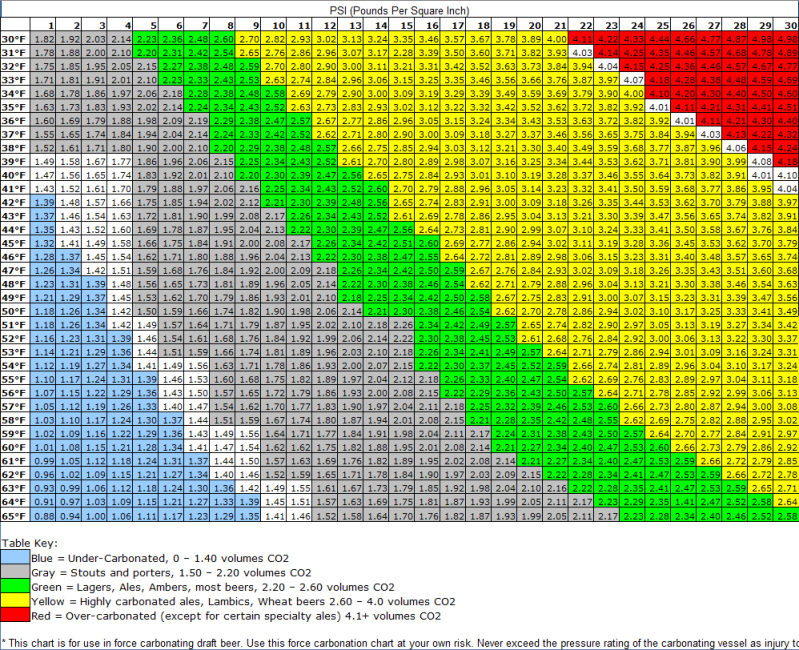I've attached a carbonation chart below. It shows the relationship between volumes of carbonation in a closed vessel (bottle or keg), temperature and pressure.
Here's what's happening w/ the bottle conditioning. The yeast need up to 3 weeks at warm temps to produce enough carbonation to carb the beer. As noted above, if you shorten that significantly by refrigerating before then, the yeast will go into hibernation and you'll have a partially carbonated beer.
Beer absorbs CO2 more readily the colder it is. That's why in the chart below, the warmer the beer you're trying to carbonate using pressure to a specific volume, the greater the pressure needs to be to get it to that volume.
That's also why you should refrigerate your beer for 24-48 hours before you enjoy it. There's a lot of pressure/carbonation in the headspace of the bottle, and refrigerating allows the beer to cool and the CO2 in the headspace to be absorbed into the liquid instead of being wasted when the bottle is opened warm.
(BTW, this is why we homebrewers with keg systems concern ourselves with how cold our lines are. When you pour a beer through warm lines, and a warm faucet, you get foam. That's because as beer warms CO2 comes out of solution and as it's being poured through warm lines and faucet, warming the beer, the CO2 is coming out as foam.)
So: bottle condition in warm temps (around 70 degrees) for 3 weeks. Then chill for 24-48 hours. Then enjoy!



